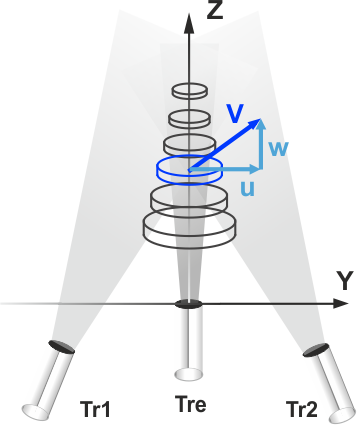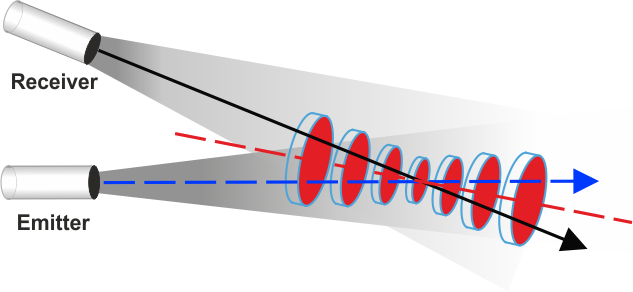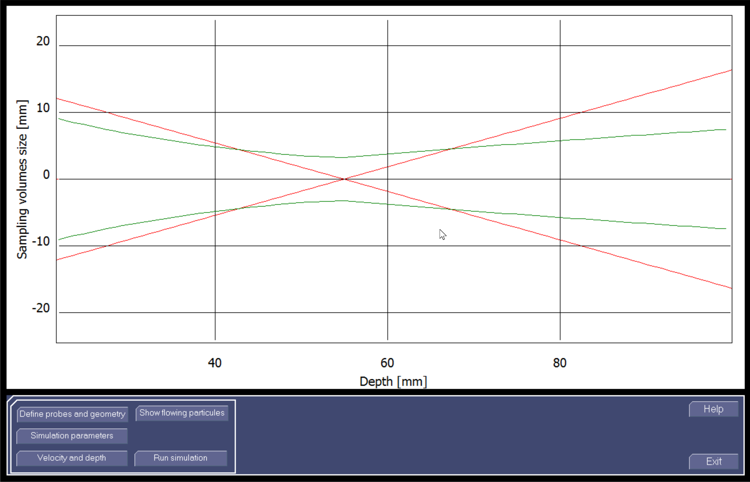2D or 3D Ultrasonic Doppler Velocimetry measuring technique is a method that enables
the measurement of two velocity components (U and W) or three velocity components
(U,V and W) simultaneously along a line.
UDV-2D and UDV-3D have all the advantages of classical ultrasonic Doppler
velocimetry, such as the capacity to realize measurements in non translucid liquids. One
of the most interesting property of these techniques compared to other techniques that
can measure simultaneously more than one velocity component is its real time feature.
Only few tens of milliseconds are necessary to compute and display a complete set of
2D or 3D velocity profile.





